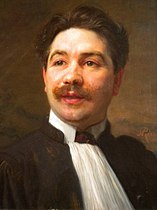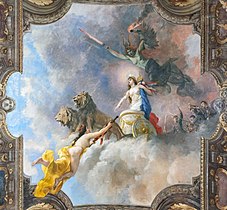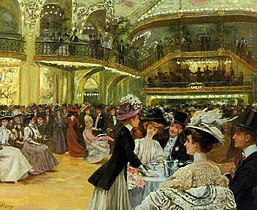Jean-André Rixens
This article needs additional citations for verification. (January 2019) |

Jean-André Rixens (30 November 1846 – 21 February 1925) was a French painter, known for his classical scenes and portraits.
Biography

He was born in
Hachette
.
In 1867, he found a position in the studio of
Babylonian Captivity
), which was purchased by the government. Shortly after, he visited Florence and Rome.
During the 1880s, he gained more widespread recognition and his financial situation improved. Many of his works were popularized by major periodicals such as Légion d'honneur.[1]
Together with
Société nationale des beaux-arts and organize an annual exhibition that would compete with the world famous Salon. As a confirmed Republican, he participated in the creation and decoration of monuments established by the Third Republic. Between 1896 and 1904, he painted three military scenes in the Salle des Illustres at the Capitole de Toulouse
.
During
Impressionist
style. All of those works are still in the possession of his descendants. After the war, he worked on creating a monument honoring those from that area who had died in the war.
Later, he returned to Paris and died there in 1925.
Selected works
-
The Death of Cleopatra, 1874, Musée des Augustins (Toulouse)
-
Portrait of a young girl, 1892
-
Portrait of the painter Georges-Paul Manceau
-
Ceiling of Capitole de Toulouse
-
La captivité des juifs à Babylone, 1873
-
Le Bal du Moulin Rouge, c. 1900
References
External links
Wikimedia Commons has media related to Jean-André Rixens.
- Exposition at the Galerie Emeric Hahn, November and December 2010
- Biography and works Archived 2020-01-27 at the Wayback Machine @ the Musées Occitanie






